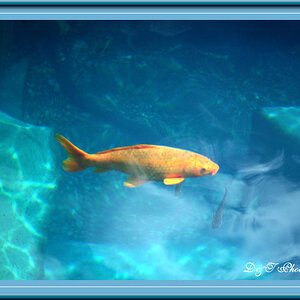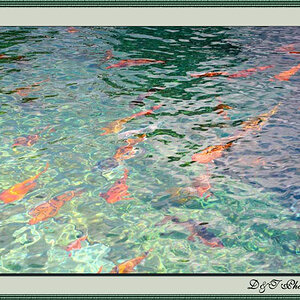- Joined
- Dec 11, 2006
- Messages
- 18,743
- Reaction score
- 8,047
- Location
- Mid-Atlantic US
- Website
- www.lewlortonphoto.com
- Can others edit my Photos
- Photos NOT OK to edit
This is actually a repost from my blog that I thought might be interesting.
Of course, here on TPF we rarely get pictures intended to be art but, in case someone goes that far, it is nice to have an opinion.
As I roam around reading various photo blogs or actually going to galleries to look at photos, I run into the two same phenomena; first, that the meaning seems to exist more in the mind of the critic than in the photo and second that the larger the print the more the actual presentation of the print seems to affect the critique.
To deal with the second issue first. I had a chance to look at smaller (11x 14) images of the art hanging in much larger sizes in one gallery. The smaller pictures were very unimpressive, not as well printed and since I wasn't impressed by the technical aspects, I could concentrate on the subject matter which, on its own, was easy to dismiss as being relatively trite, a simple idea belabored intensely over a series of images that used male nudity as a 'selling point' while the nudity had no relation to the idea incorporated. (I understood the idea only because I read the notes printed on the wall of the gallery.)
The much larger (20 x 30) framed versions were actually magnificently printed; the colors were deep and vibrant, the edges sharp and defined where appropriate. While color was irrelevant to the subject matter, the larger images had both a real presence from the size and color and an implied authority because they had been actually treated this way.
It was impossible to separate the effects of the size and marvelous printing from the impact of the subject matter and so the bigger images were impressive even to a jaundiced eye – mine. This was, and is, wrong. I was rewarding the craftsmanship of the printer and the framer and lumping that in with whatever impression I got from the actual photo. It was marginally frightening to see just how, even though I tried, I couldn't separate the presentation from the art.
So, if you want your work to be appealing to critics, print it large.
The first point mentioned above, that the image seem to exist more in the mind of the critique than in the photo, bears a little more explication. The relative difficulty of understanding more 'advanced' art was treated pretty clearly by Clement Greenberg in his essay “AVANT-GARDE AND KITSCH” readable at Greenberg Avant-Gardde and Kitsch . One of his points is that avant-garde artists separate themselves from the more realistic and the road to understanding, while difficult, is worth it because somehow the more advanced painters are better and better for the viewer. This advanced art is not 'synthetic'.
Here is a quotation from his essay.


Left: Repin, Cossacks; Right: Picasso,Woman with a Fan
“Let us see, for example, what happens when an ignorant Russian peasant such as Macdonald mentions stands with hypothetical freedom of choice before two paintings, one by Picasso, the other by Repin. In the first he sees, let us say, a play of lines, colors and spaces that represent a woman. The abstract technique -- to accept Macdonald's supposition, which I am inclined to doubt -- reminds him somewhat of the icons he has left behind him in the village, and he feels the attraction of the familiar. We will even suppose that he faintly surmises some of the great art values the cultivated find in Picasso. He turns next to Repin's picture and sees a battle scene.
The technique is not so familiar -- as technique. But that weighs very little with the peasant, for he suddenly discovers values in Repin's picture that seem far superior to the values he has been accustomed to find in icon art; and the unfamiliar itself is one of the sources of those values: the values of the vividly recognizable, the miraculous and the sympathetic. …........
That Repin can paint so realistically that identifications are self-evident immediately and without any effort on the part of the spectator -- that is miraculous. The peasant is also pleased by the wealth of self-evident meanings which he finds in the picture: "it tells a story. " Picasso and the icons are so austere and barren in comparison.
What is more, Repin heightens reality and makes it dramatic: sunset, exploding shells, running and falling men. There is no longer any question of Picasso or icons. Repin is what the peasant wants, and nothing else but Repin. It is lucky, however, for Repin that the peasant is protected from the products of American capitalism, for he would not stand a chance next to a Saturday Evening Post cover by Norman Rockwell.
….... But the ultimate values which the cultivated spectator derives from Picasso are derived at a second remove, as the result of reflection upon the immediate impression left by the plastic values. It is only then that the recognizable, the miraculous and the sympathetic enter. They are not immediately or externally present in Picasso's painting, but must be projected into it by the spectator sensitive enough to react sufficiently to plastic qualities. They belong to the "reflected" effect. In Repin, on the other hand, the "reflected" effect has already been included in the picture, ready for the spectator's unreflective enjoyment.(4) Where Picasso paints cause, Repin paints effect. Repin predigests art for the spectator and spares him effort, provides him with a shore cut to the pleasure of art that detours what is necessarily difficult in genuine art. Repin, or kitsch, is synthetic art.”
This was, of course, written about painting where the art is created from a blank canvas. How does this apply to photography where we must work primarily with objects and environments that we seek or that present themselves? Do art photographers present undigested images and require viewers to extend effort?
In the blog 1/125, the authors term the two kinds of photography as 'unliterary' and 'literary' and write this:
Greenberg describes how the avant garde has moved into non-objective art and away from the strict representative of form as identity.In photography, the situation is somewhat more dire, because it is much, much harder for viewers to move freely between the “unliterary” photographic realm and the “literary” photographic realm. There is hardly any middle ground between them, the way there is with books.
This is much more difficult for photographers as they generally must work with objects that are representative so the path seems to have been to step further away from the direct relationship between object and meaning and instead to have an idea which is tied tenuously to the photograph by an intricate web of words. Rather than undigested art what we are given is fully realized ideas, although simple, but are made difficult to understand by the degree of distance from the supposed art.
This has spawned a plethora of art photographic of varying degrees of technical competence. Some of the art shows a great deal of work and technical achievement but that has no relationship to the depth of meaning of the related idea. In that way, this art is closer in form to the kitsch synthetic art that Greenberg decries.
The ready availability of supporting technology means a never failing crop of photographic artists who have honed craft before they have developed ideas and so there is, seemingly, a flood of photographic art that has little sense to anyone but the critics and gallery owners who need to support even weak concepts in order to provide grist for the artistic mill.
What we see is not deep concepts that are represented in the way that art is done – think Cubism – but simplistic single ideas that are illustrated with sets of images all tied back to that one idea. This is false art - work that is intended to seem like art by infusing it with obscurity.
In 'art photography', the most valuable items in any photography exhibit are often the notes in the program to tell us what we are seeing and why it is important. [sarcasm]This may be an important step as the 'peasants' become educated and transition from lovers of kitsch to appreciators of art[/sarcasm] (Greenberg was a fervent Marxist at the time he wrote the essay) but the reality of the situation is slightly different.
In a comment in a blog on the 'APHOTOEDITOR.com, one quite excellent working commercial photographer said this:
“The shittier a photograph gets, the more words are used to describe it because it can’t stand on its own. That describes most fine art photography these days. There’s more crap coming out of the art world than there is coming out of the commercial one.”
When art gets so far from common currency that it requires special knowledge to understand and appreciate it - and that knowledge is not embedded in the image - then there is real danger that gibberish will be passed off as art both by the artists who have no real clue and by critics who need something to promote. So when I read a note that tells me what the 'art' purports show and I still can't make the connection between the meaning as given and the art as shown, then I start to smell not flowers but fertilizer.
It is nice to see a photo that 'stands on its own', that has a meaning that doesn't require a plethora of words and very large images to make some impact.
I believe, and try to do, photography that is self-referential i.e. photographs that need to be looked at but provide all the information within the frame to allow even the marginally astute viewer to understand what I am seeing and what I want them to think about.
Hurrah for self-referential photography.
Of course, here on TPF we rarely get pictures intended to be art but, in case someone goes that far, it is nice to have an opinion.
Last edited:



![[No title]](/data/xfmg/thumbnail/31/31742-596f6bbc60b2ba7fed2cd25f5aacf41c.jpg?1619734985)
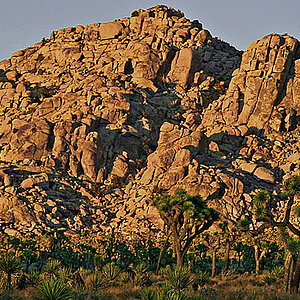
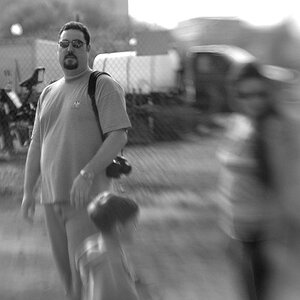
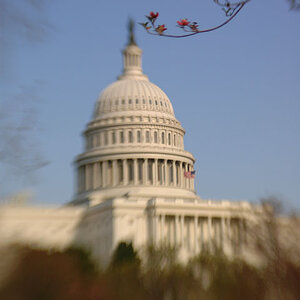
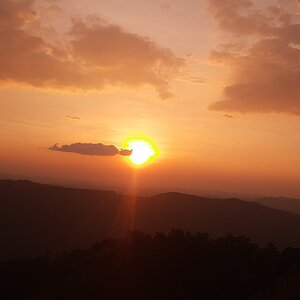
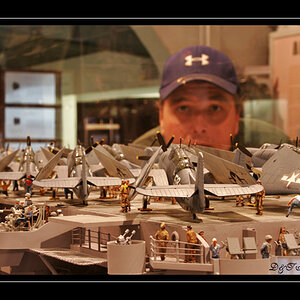
![[No title]](/data/xfmg/thumbnail/31/31012-f5e0c7cdea2f2c3e44737e3f61c2461a.jpg?1619734567)

![[No title]](/data/xfmg/thumbnail/38/38294-cb4a5aa0ded725d4c694e6eebe276f0d.jpg?1619738564)
